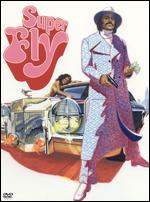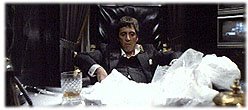
There have been thousands of films made about the lives and souls of Black folks. There have been stories told about brothers in everything from the slave ships to rocket ships.
I remember when I was a little boy in the early 70’s and Kung Fu movies were the rage. I recall looking at the screen and seeing a bunch of Chinese folks practicing moves in Shaolin temples. Seeing images like that made me (and many others) think that all Chinese people knew Kung Fu. As a little boy I used to walk up to Chinese people on the street and yell ‘Hiiiii-ya!’ As I was jumping in the air doing a karate kick.
That was the power of films like ‘Master Killer’ and the ‘Five Deadly Venoms.’ I bet I wasn’t the only young brother at that time who took up karate because he wanted to learn how to defy gravity like the “Kid With the Golden Arms.”
I don’t believe that art makes anyone do anything, be it a rap song, rock song, book, movie or whatever. But art does articulate certain energies that awaken people to things going on around them, and entice them to want to join in.
For instance, when I was a little boy there was a movie called ‘Super Fly’ which starred the late Ron O’Neil. From what I understand, before ‘Super Fly’ came out brothers were into the civil rights movement and were about getting their acts together. That was until O’Neil popped up on screen as the ‘Mac-a-lack drivin’, coke- sniffin’, fine white woman-fuckin’, fur coat wearin’, big time money makin’, cocaine dealer Priest.
“Brothers weren’t the same after that”; my pops and his friends tell me.
‘Super Fly’ wasn’t the only movie to have that kind of effect; there have been others in more recent times.
But back to ‘Super Fly’; let’s start there.
Tale of a Pusher Man: Super Fly
According to published reports and interviews Ron O’Neil was a classically trained stage actor. He had all of the chops to make it as a first-class artist. But the trouble was - work wasn’t plentiful.

And then he was offered the role that would change his life.
What should’ve been his shining moment soon dissolved into a curse. You see the character he was portraying was a cocaine dealer named Priest who wanted to get out of the game. He wanted to do one last number (as he called it) and then retire young and rich with a million dollars under the mattress.
Only one problem for our hero: Very few drug dealers ever see retirement. His partner Eddie, played by the late actor Carl Lee, didn’t share the same dreams.
“Nigga, what you gonna do besides what you doin’ now, besides pimp, and to be honest with you I don’t think you got the heart for that…” Somewhere in that same monologue Eddie would say the words that would be echoed by New Jack crack dealers some twenty years later …”Why do you think they call it dope?”
Our hero’s problems aside Ron O’Neil had some bigger problems knocking on his door: the NAACP. They wanted to boycott his ass.
Before crack, heroin and the people that dealt it was the scourge of the Black community. Needles were everywhere as were junkies with arms that looked like railroad tracks. So a movie about a Black drug dealer in Harlem was not going to be a good look.
In his own defense O’Neil countered: “The heroin pusher is the scourge of the black community. But we’re talking about coke, which is basically a white drug. Since coke is not physically addictive, people do not steal and rob to get it. There are no coke junkies.”
That’s what they didn’t know back then.
So back to the Civil Rights movement, folks had been protesting and getting hit upside the head for equal access into the society for so long that they couldn’t take it anymore. On the film front, Black folks wanted to see images that truthfully portrayed us. No one wanted to see Sambo, Rochester and brothers with mops and buckets any more. They wanted to see some real brothers.
Enter Melvin Van Peebles. ‘Sweet Sweetback and his Baaaadaaaassss Song’ premiered in 1971. So many people were elated to see a film where a brother not only got to kick some ass but got to get some ass on film too.
Say what you want about the movie but it is a pivotal point in Black cinema.
‘Super Fly’ opened and was heralded by brothers on street corners, nightclubs and pool halls as being the equivalent of the return of Sweet Daddy Grace. Brothers flocked to get long fur coats with hats to match, and had Rolls Royce grills installed on the front of their cars. I bet more than a few went out and got themselves a white woman too.
According to the civil rights crowd, brothers forgot about the movement. They threw away their dashikis for sharkskin suits and multi-colored shirts and jump suits. And of course, white women.
Many a brother whose hair is more salt than pepper now, looks back on that moment in time as an event that changed our culture. Never mind the fact that drug dealers and pimps had been dressing the same way for years in Black communities all over the country. Frank Lucas, Frank Matthews, Nicky Barnes and many others were ghetto celebs at a time when the phrase wasn’t popular.
The World is Yours: Scarface
There is nothing new about cocaine it has been around for a long time. The 70’s and early 80’s have been called the ‘champagne and cocaine’ era. Only the ‘beautiful people’ did it.

When the film ‘Scarface’ debuted in 1983 it was a blockbuster. Some of everybody loved it. Here’s the story: Cuban immigrant lands on these shores in search of the mythical American dream. The criminal past he seems to have had back in his homeland has been bought here with him. He wants to be rich like a Rockefeller. His ‘balls- out- go- for- mine’ attitude and determination elicits ‘Amen brother-like’ responses from brothers from all the way in New York to LA.
Monologues like: “…I only got two things in this world: my balls and my word, and I don’t break them for nobody, man…” Or this one: “Who put this thing together? Me, that’s who. Who do I trust? Who do I trust? Me, that’s who…” Were recited on street corners in Black neighborhoods everywhere. There was something about the protagonists ‘fuck you I’m a get mine’ that resonated with brothers all over. It was the perfect primer for the oncoming plague called crack.
Long established rules of the street were thrown by the wayside when crack hit the scene. At one time cocaine dealers weren’t known for violence; after all they catered to a more upstanding clientele. Crack cocaine was made cheap, no longer did you have to be a member of the beautiful one’s to get high. For 20 dollars or less, you could get as high as apple pie in the sky.
But with it being cheap came the violence.
Crack also made people paranoid. No one trusted anyone anymore. Unlike heroin or cocaine dealers, crack was dealt by people as young as 15. So there it was 1985, 1986 when crack hit the streets, BMW’s, Ferrari’s and Benz’s were all over and being driven by teenagers. Teens, who by the way had wholeheartedly absorbed the Tony Montana mantra: Fuck you the world is mine.
As a result semi-automatic weapons and drive by shootings became more and more the norm.
Psychopaths on the Warpath: Colors
Crips and Bloods originated in Los Angeles in the early 70’s. The only other big city that had a gang problem that matched LA’s was Chicago.
That was until the late 80’s.
Crack and the crime that came with it was in every city throughout the country by 1987. At the same time gang violence in LA was at an all time high. It was like a mini-Vietnam.
One of the fathers of the crack movement was an ill literate tennis pro named Freeway Ricky Ross. He supplied cocaine to dealers all over LA. At some point he got into his head that he needed to expand his business and set up shop in other states.
Taking a page from the ‘Freeway Rick’ book gang members did the same thing: they expanded their turfs to other states. Later DJ Quik would remark in his classic recording “Just Like Compton” about how Bloods and Crips were in places like Denver and have “never even seen the ‘Shaw.”
At the same time that that was happening a movie called ‘Colors’ hit the big screen. ‘Colors’ told the story that the rest of America had only seen in: 30 news clips. After it came out, Crips and Bloods were everywhere. They were turning up in cities that up to that point hadn’t had a gang problem.

No comments:
Post a Comment